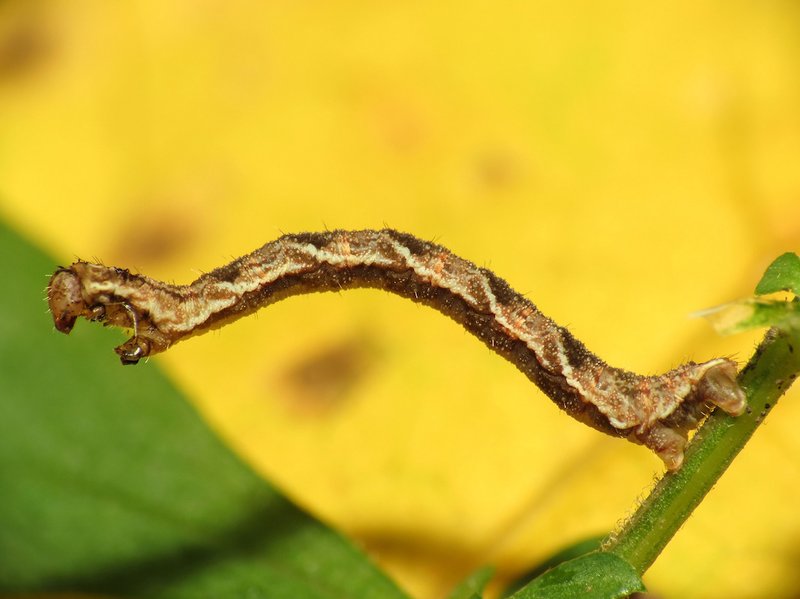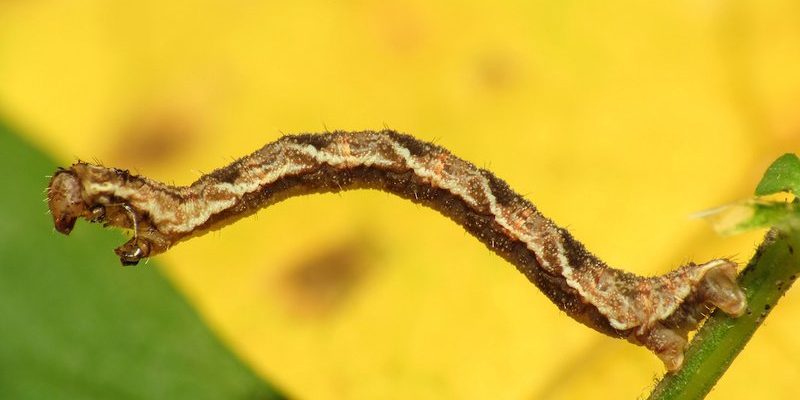
So, what causes these little guys to come out in droves? Honestly, it’s a mix of environmental changes, predator-prey dynamics, and some good old-fashioned nature rhythms. It’s like a dance, where every player is influenced by the others. Let me explain how factors such as climate, food availability, and natural predators intersect to create these seasonal outbreaks of inchworms.
What Are Inchworms?
Inchworms are actually the larvae of various species of moths, primarily from the Geometridae family. These caterpillars are called inchworms because they “inch” along by arching their bodies and then extending forward, creating a unique motion. Imagine a tiny gymnast performing on a balance beam—graceful yet a bit clumsy at times.
Typically, inchworms are green, brown, or even camouflaged to match their surroundings, making them hard to spot. This adaptability helps them avoid predators. There’s something fascinating about how nature equips these tiny creatures with survival tools, don’t you think?
You might be wondering, “Why should I care about inchworms?” Well, they play a significant role in the ecosystem as both herbivores and prey for various animals. Understanding their behavior can give us insights into our wider environment.
Understanding Seasonal Outbreaks
Seasonal outbreaks of inchworms can feel a bit like a surprise party—sometimes you see it coming, but other times, it just appears out of nowhere. So, what sparks these sudden population explosions? Mostly, it boils down to a few environmental triggers.
Firstly, temperature plays a crucial role. Inchworms thrive in warm conditions. Spring and early summer typically offer the ideal climate for their development. If conditions are just right, and there’s minimal disturbance, you may witness an inchworm explosion. This is nature’s way of ensuring the survival of the species by taking advantage of optimal environmental conditions.
Secondly, the availability of food is another big factor. Inchworms primarily feed on leaves, and an abundant food supply can lead to rapid population growth. If trees and plants bloom prolifically in a particular season, inchworms can feast and flourish.
The Role of Weather Patterns
Weather patterns significantly influence inchworm life cycles. You might remember the intense storms or extreme weather events that affect where you live. Similarly, inchworms are sensitive to climate changes.
For example, after a warm winter, you might notice a surge in the inchworm population. Unusually warm temperatures can lead inchworms to emerge earlier than normal. Conversely, a cold snap can sometimes reduce their numbers by disrupting their life cycles. The timing of these weather patterns can create conditions ripe for outbreaks. It’s like a domino effect—one change can lead to another.
Additionally, rain can help inchworms by providing moisture, which allows leaf growth. Too much rain can, however, wash them away or drown their eggs. Understanding these nuances helps us appreciate how closely interconnected nature is.
Predator-Prey Dynamics
In nature, everything is about balance. Inchworms have natural predators, like birds and wasps, that play a key role in keeping their populations in check. When predator numbers are low, inchworms can multiply quickly without fear. This can cause a sudden increase in their populations—akin to letting a balloon go that had been held tightly.
However, when these predators are present in larger numbers, they can reduce the inchworm population rapidly. It’s a constant push and pull. The health of one species can greatly affect the other. These dynamics create a fascinating interplay in the ecosystem, showing how everything is connected.
The Impact of Human Activity
You might not realize it, but human activity can also influence inchworm outbreaks. Urbanization, deforestation, and changes in land use can significantly impact their habitats. Removing trees and vegetation reduces their food supply, while creating more areas for predators can disrupt their populations.
For instance, in areas where pesticides are heavily used, there can be a decline in both inchworm and their natural predators. This imbalance can lead to a sudden spike in the inchworm population, as they’re not kept in check. It’s a little reminder of how crucial it is to maintain a healthy, balanced environment.
Monitoring Inchworm Populations
So, how do scientists keep track of these inchworms and their outbreaks? Monitoring involves observing their populations over time and studying their behaviors. Researchers often look for specific signs like increased leaf damage or the appearance of large numbers of inchworms in a localized area.
Citizen science plays a big role too. Anyone can contribute to understanding these outbreaks by reporting sightings or observing the impact on local vegetation. This broadens the pool of data and helps scientists draw more accurate conclusions. You might be surprised how much your observations can help!
What Can We Do?
Now that you’re in the know about inchworms and their seasonal outbreaks, you might be wondering how you can help. For starters, planting native trees and plants can provide a healthier habitat for these creatures and their predators. This is a win-win for the ecosystem.
Another way to contribute is by reducing the use of pesticides. By opting for more organic gardening methods, you create a balance that encourages a healthy food web. Remember, every little action counts.
In conclusion, understanding inchworms and their seasonal outbreaks opens a window into the delicate balance of nature. These tiny creatures and their interactions with the environment, weather, predators, and even us are part of a magnificent ecosystem. By being informed and taking steps to support nature, we can help create a healthier world for inchworms and the many species that depend on them. So next time you spot an inchworm, take a moment to appreciate the complex web of life it represents!

